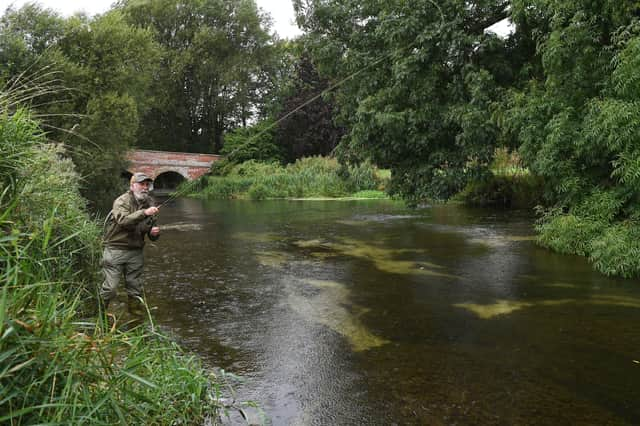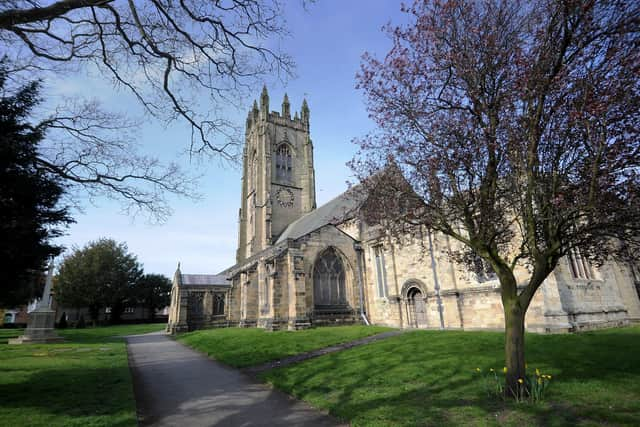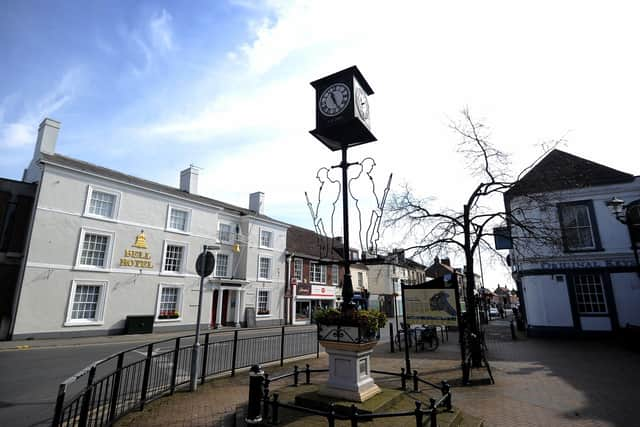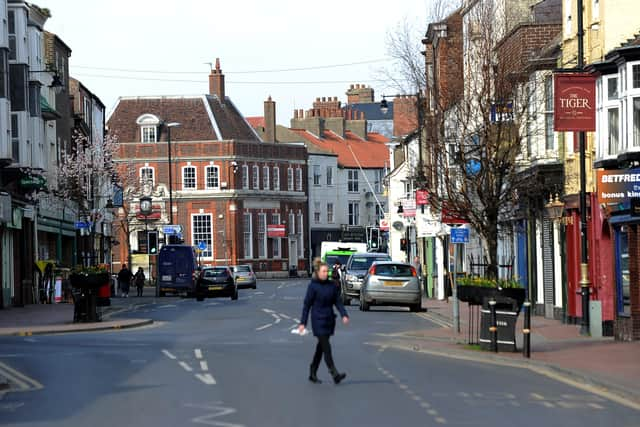Why Driffield has been reeling in nation’s anglers for centuries


The self-styled “Capital of the Wolds”, Driffield would, at first sight, appear to be the definition of a sleepy market town. A short walk through the streets radiating out from the main street (Middle Street) reveals old and new small independent trader shops, architectural evidence of Victorian and Georgian development and – with mentions on street signs of mills and wharfs – hints of industrial and agricultural heritage. The pace now is slow, though, and you’d have to look hard to find proof that the town was once one of the most important places in Yorkshire.
The history of Driffield is primarily defined by the developments of agriculture and transport. Though the town’s roots can be traced back as far back as AD 705 – when Aldfrith, King of Northumberland, died while visiting ‘Driffelda’ – the town really became significant with the arrival of intensive farming, the Enclosure Acts and then the canals and, finally, the railway.
Advertisement
Hide AdAdvertisement
Hide AdIn many ways, it’s the perfect example of societal and technological advances in Britain over the past few hundred years, albeit one relatively untouched by the past half-century or so.


Evidence abounds that Driffield was a significant settlement as far back as the Neolithic period, was also a Roman settlement and that it even boasted a castle in medieval times.
Throughout all this, the town grew thanks to developments in agriculture, with several water mills producing flour and regular markets and fairs drawing buyers and sellers from across Yorkshire. Of the oldest extant buildings, All Saints church retains elements dating from the 12th century, although it was substantially rebuilt a hundred and three hundred years later.
Some of the watermills were believed to have been built around the time of the Norman Conquest but, sadly, none still exist in any meaningful form today.
Advertisement
Hide AdAdvertisement
Hide AdIt was in the 18th and 19th centuries, though, that Driffield really found its feet. The town had already become a popular stop-over for travellers from West Yorkshire and beyond visiting the Yorkshire coast and it was the forward-thinking landlord of the town’s most successful inn – The Bell – that began the campaign to build a canal.


Corn grown in the surrounding fields struggled to get to market via the then-unimproved River Hull, but Thomas Porter’s successful lobbying saw 11 miles of canal built, joining Driffield with Hull and the River Humber to speed the passage of agricultural payloads. It opened in 1770 and completely transformed the town.
Within a century, the population of the town more than quadrupled (to almost 4,000); mills and warehouses were built or expanded; and breweries, tanneries and agricultural concerns had swift access to significant markets as true industry arrived.
Among its nearest competitors, the town overtook Beverley and Bridlington and what we recognise as Driffield today was swiftly forged. John Wesley preached in the town square in 1772, a symbol of the growing confidence of the townsfolk. By Victorian times, there were at least six non-conformist chapels and the firmly dissenting town was attracting aesthetes and artists.
Advertisement
Hide AdAdvertisement
Hide AdIn 1846, when the railway arrived, the town grew and prospered even further. The main industries became the manufacture of artificial manure and a vital agricultural product known as “cattle cake”. Cabinetmaking was a speciality and the town became significant to the printing world when, in 1831, Bridlington printer Benjamin Fawcett moved into a shop and studio on Middle Street and gradually transformed colour printing techniques. He formed a close working relationship with ornithological author Francis Orpen Wood and invented new, more elaborate and accurate means of printing and colouring the illustrations in Wood’s enormously popular books. He made the inks himself and hand-coloured black-and-white wood block carvings. It was a methodology believed impossible before Fawcett achieved it.


Another master craftsman whose work is still visible in Driffield is Hull architect Cuthbert Brodrick. Before he went on to create the wonders of Leeds Town Hall and Corn Exchange and the Grand Hotel in Scarborough, he cut his teeth on the bank – which has since become a shop – at 51 Market Place. It demonstrates elements of the classical style Brodrick picked up on his Grand Tour and perfected in his celebrated later works.
A few years later, an early exponent of archaeology John Mortimer – a corn merchant by trade, born in nearby Fimber – moved to Driffield. By the time he arrived in the town, in 1869, he was already in his mid-40s and he had been teaching himself archeology since being inspired by a visit to the Great Exhibition, some 15 years earlier. He taught local farmers how to spot fossils in their fields and encouraged them to present him with their finds. These became known as “Mortmers” and formed the basis of the museum he eventually built in Lockwood Street in 1878. Mortimer turned his attention to local burial mounds, identifying and excavating around 300 in total, and he was nationally recognised as a pioneer and expert in the burgeoning field of rescue archaeology. Sadly, after the Corn Laws ruined his business, Mortimer died penniless but there are now over 66,000 pieces on display or held by various museums in Hull.
In recent cultural terms, Driffield perhaps punches below its weight. Woody Woodmansey – the drummer for David Bowie’s early-70s backing band the Spiders From Mars – was born in the town and, still with popular music, there are many tales told about a decidedly incongruous musical meeting that took place in Driffield in 1987. Former grocers warehouse Lance & Co on Middle Street had recently been turned into a recording studio and John Cale – of 60s New-York art rockers the Velvet Underground – produced a record there with “Madchester” band Happy Mondays.
Advertisement
Hide AdAdvertisement
Hide Ad“Seeking isolation and tranquility” (according to the band’s late manager, Tony Wilson), they chose the facility to record their unwieldily-titled album Squirrel and G-Man Twenty Four Hour Party People Plastic Face Carnt Smile (White Out). Stories of the recording and the accompanying hedonism are legion among the East Riding musical community, some of whom witnessed events unfold. Not a huge seller on release, the record is now regarded as partly informing and inspiring the Britpop movement. The studio was, unfortunately, lost to fire before any further significant recordings could be made and the building is now a bar and nightclub.
Nationally, Driffield is possibly best-known among anglers. In 1806, Alexander Macintosh, of The Driffield Angler, wrote: “I have angled in many parts of Scotland and the north of England, but of all the places on this side of Great Britain, most delightful for this charming recreation, I must prefer the river at Driffield.”
The “gin-clear” chalk-bed streams of the Wolds provide the perfect habitat for trout and Driffield’s West Beck, in particular, is renowned for its grayling, chub, dace and, particularly, wild trout. The same water flow that once drove two of the town’s biggest watermills now draws game fishers from all over the country.
There are even claims – repeated as recently as 2019 by Paul Whitehouse in the Gone Fishing book he wrote with his TV fishing companion Bob Mortimer – that the dry fly fishing technique was invented in Driffield. The prized art of dry fly fishing demands the fisherman land his fly on top of the water without breaking the surface.
Advertisement
Hide AdAdvertisement
Hide AdThe consequent high-regard developed among practitioners of this humble aquatic artistry is perhaps why Driffield is symbolically viewed as something of a backwater, but definitely in the best way possible.
Editor’s note: first and foremost - and rarely have I written down these words with more sincerity - I hope this finds you well.
Almost certainly you are here because you value the quality and the integrity of the journalism produced by The Yorkshire Post’s journalists - almost all of which live alongside you in Yorkshire, spending the wages they earn with Yorkshire businesses - who last year took this title to the industry watchdog’s Most Trusted Newspaper in Britain accolade.
And that is why I must make an urgent request of you: as advertising revenue declines, your support becomes evermore crucial to the maintenance of the journalistic standards expected of The Yorkshire Post. If you can, safely, please buy a paper or take up a subscription. We want to continue to make you proud of Yorkshire’s National Newspaper but we are going to need your help.
Advertisement
Hide AdAdvertisement
Hide AdPostal subscription copies can be ordered by calling 0330 4030066 or by emailing [email protected]. Vouchers, to be exchanged at retail sales outlets - our newsagents need you, too - can be subscribed to by contacting subscriptions on 0330 1235950 or by visiting www.localsubsplus.co.uk where you should select The Yorkshire Post from the list of titles available.
If you want to help right now, download our tablet app from the App / Play Stores. Every contribution you make helps to provide this county with the best regional journalism in the country.
Sincerely. Thank you.
James Mitchinson
Editor
Comment Guidelines
National World encourages reader discussion on our stories. User feedback, insights and back-and-forth exchanges add a rich layer of context to reporting. Please review our Community Guidelines before commenting.